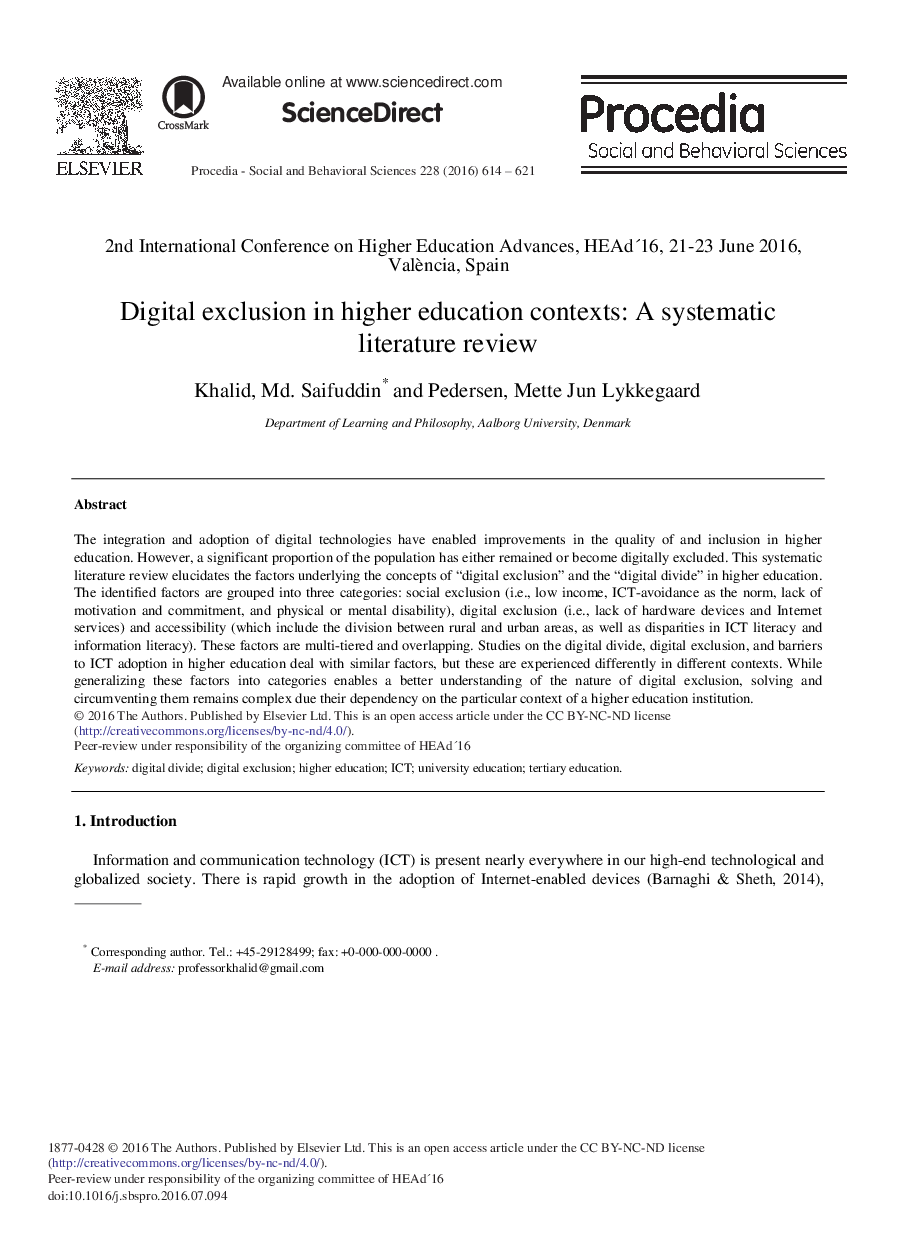| Article ID | Journal | Published Year | Pages | File Type |
|---|---|---|---|---|
| 1107204 | Procedia - Social and Behavioral Sciences | 2016 | 8 Pages |
The integration and adoption of digital technologies have enabled improvements in the quality of and inclusion in higher education. However, a significant proportion of the population has either remained or become digitally excluded. This systematic literature review elucidates the factors underlying the concepts of “digital exclusion” and the “digital divide” in higher education. The identified factors are grouped into three categories: social exclusion (i.e., low income, ICT-avoidance as the norm, lack of motivation and commitment, and physical or mental disability), digital exclusion (i.e., lack of hardware devices and Internet services) and accessibility (which include the division between rural and urban areas, as well as disparities in ICT literacy and information literacy). These factors are multi-tiered and overlapping. Studies on the digital divide, digital exclusion, and barriers to ICT adoption in higher education deal with similar factors, but these are experienced differently in different contexts. While generalizing these factors into categories enables a better understanding of the nature of digital exclusion, solving and circumventing them remains complex due their dependency on the particular context of a higher education institution.
